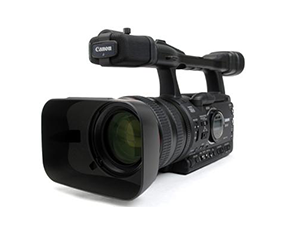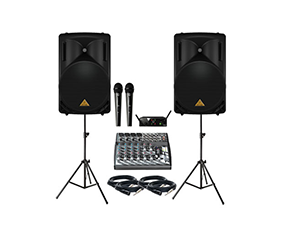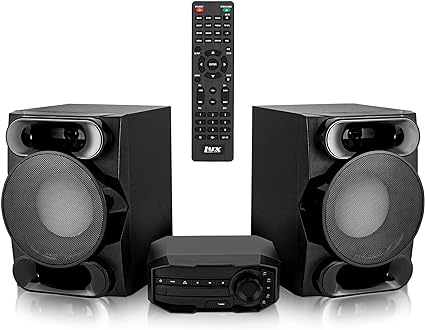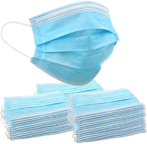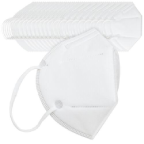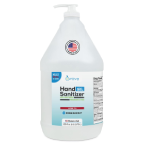|
Business Tip - Working with Models
©NYI Student Lukas Forejt
|
|
The idea for this particular article came from an e-mail we received not long ago from an NYI student. He wrote that he was discussing a nude modeling session with a woman who was not a professional model, and neither of them knew exactly how to proceed. Sensing a Business-Tips article, we asked him to supply a few more details. The specifics in his instance were that the woman was a dancer who was interested in posing for artistic nude compositions.
So, in this article, we're going to cover the business of working with models. Sorry, not Super Models. That's a subject unto itself. Not even wanna-be Super Models, who are probably the toughest people in the world with whom you could choose to work.
No. We're talking about models-normal adult men and women, with whom you might wish to conduct a photography session of some sort. |
Perhaps the local department store wants a photo of a man in his 30's in an overcoat. Perhaps you have an idea for a photograph-let's say a man pushing a woman on a swing, shot from an unusual angle and lit in an interesting fashion. Perhaps you have a client, like our student, who wishes some tasteful nude shots.
TIME OUT: Any readers who think we're headed into dangerous territory here should realize that people have been cavorting in the altogether virtually since photography was invented. Many of these are of scientific, artistic studies ala Eadweard (yes, that's really the right spelling E-a-d-w-e-a-r-d-) Muybridge or Edward Weston. If you've never read Weston's musing about his work during the '20s, '30s and '40s, it's worth taking a look at his Daybooks. He was a great photographer, to be sure, but he seems to have had a very big ego and a very busy love life with his models. Zut alors!
Back to Business: Whatever reason you wish to work with a model, we suggest that the way to get started on the right footing is to strike a fair business deal.
This can be done by discussing three simple questions forthrightly with your model. When you've reached agreement on these, you can make a deal that works for the both of you.
- What usage do you each plan for the resulting photographs?
We'll examine each of these three questions, but first let's review some important points.
First of all, you, the photographer, may be the only person with any use at all for these photographs. Often, however, that's not the case. Chances are the people you work with will be aspiring models, or actors, or dancers, or painters, or whoever. They need good photographs of themselves, possibly showing them acting or dancing. So you should consider each person's needs and make a deal that works accordingly.
Second, even with no deal between you, there are established rights. You, the photographer who clicks the shutter (or in some instances your employer, if you're working for someone else) has the right to copyright a photograph. However, even though you copyright it, your ability to use it commercially is limited by the rights of the recognizable people in the photograph. They retain significant rights to privacy and restrictions on your commercial use of their likeness without their explicit permission as spelled out in some form of release.
The rights of celebrities and public figures are a complicated ball of wax that we consider completely beyond the scope of this tip. So too, we do not address the bundle of rights tied up with what constitutes news and the freedom of the press under the First Amendment.
Rather, we're discussing straight forward negotiations between you and one or more people who want to work with you to create a photograph or a series of photographs. You need to ponder the three questions so you can make a deal that meets your needs.
As we noted, the first question is usage and the second is rights. In reality, these two issues are so closely bound together that we discuss them as one. That's because, once you've determined what usage is intended, you need to make certain that the user has the proper rights.
Perhaps you and your subject both simply wish to use photos for your respective portfolios. In this instance, you may want to follow a practice know as "testing."
Testing
Sometimes, an aspiring model and photographer are willing to work together in an arrangement known as "testing."
When a photographer "tests" a model, it is agreed that both photographer and model can use the resulting photos in their respective portfolios. The photographer promises to make photographs available to the model, and a deal is made regarding the cost of film, processing and prints. Sometimes the costs are split 50-50, other times the split is different. If the model wants a lot of prints, he or she may pay all the cost of those prints. Neither of them has the right to use the photos for any other purpose.
For testing, the money issue should be easy to work out. After all, if you work with a model in either a location or studio setting, you're unlikely to shoot more than three or four rolls of film, so processing should be $100, maybe a little more. The real investment both of you make is in your time, since the shoot may take a day, perhaps a very long day.
©NYI Student Stephen J. Wild
Let's go back to our example, the photographer and dancer who want to collaborate on a series of nude photographs.
If both people wish to have photographs for a portfolio, then an agreement modeled on "testing" would probably cover those activities. If the photographer also wants the rights to make and sell fine art prints of those photos, that is another type of use and the right to do that should be spelled out in the agreement.
For that right, the model might request additional consideration. One possibility would be for the photographer to commit to giving the model one print of every image prepared for sale at no cost.
The details aren't important, you should be able to work those out and you should do so before the shooting session. The important part is that you discuss what is planned before some undiscussed use takes place. For example, major men's magazines only publish photographs with good releases and proof that the models are not minors.
By the way, when we speak of an agreement, that should be some written document, either in the form of a signed release or as a letter of agreement. While we don't intend this article to be specific legal advice, it's safe to say that the only way to prevent future misunderstandings in detailing usage and rights is to have a written agreement. Anything that's not covered by the written agreement has to be subject to a separate negotiation.
If, for example, the photographer in our scenario sold some of the photographs from the nude session with the dancer to a men's magazine without the model's clear written permission, he would be wide open for a lawsuit. There's little chance any legitimate magazine would purchase them without a signed release, and a phony release would leave the photographer open to added charges of fraud, as well as violating the model's right to privacy.
Life is too short and lawyers will endure forever, so don't end up getting sued over the use of your photographs. Much better that you make a deal on the front end.
What happens if a later possible usage crops up that was not intended at the time? What if the photographer had no intention of publishing those photos in a magazine when he took them, but five years later he meets an editor or publisher who wants to use the photos?
The only option at this point would be for the photographer to track down the model and negotiate this usage separately. That's one reason it's in the photographer interest to try to anticipate what rights might reasonably be necessary and to try to acquire them all at the onset. At a minimum, it's going to take time to make the added deal, and at worst, the model may be hard or impossible to locate a few years later.
Commercial Use
©NYI Student Albert D. Arauz
If you're hiring a model for an overcoat advertisement, then you're looking at an overt commercial use. You want to sell the photo, with the model's full release, to the department store. The department store doesn't want to get embroiled in any legal disputes, you can be sure. So, you need a release that clearly gives you and your customer permission to use that photo for commercial use.
Obviously, the value of this photo to the model is probably limited. An aspiring actor, for instance, may be able to use one, perhaps two photos of himself in an overcoat, but he's not going to fill his portfolio with them. One approach is to pay the model. That makes good business sense, but if your budget is small, you may be able to make a deal and extend the shooting session to take more photographs of the actor in different outfits and poses beyond the ones you need for your customer. Then, in consideration for the added photographs, your model should give you a full release for few or no dollars.
Are you beginning to get this idea? The photography business, like life, is in large measure a negotiation. You can take photographs that will benefit you and your model but be honest and fair and protect both of your needs by discussing payment and releases before you pick up the camera. If you follow these guidelines you'll be able to handle almost any photo situation involving a model from a portrait sitting to a glamour shoot.
|





























